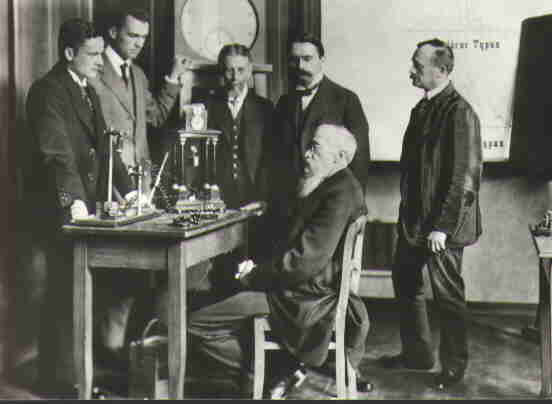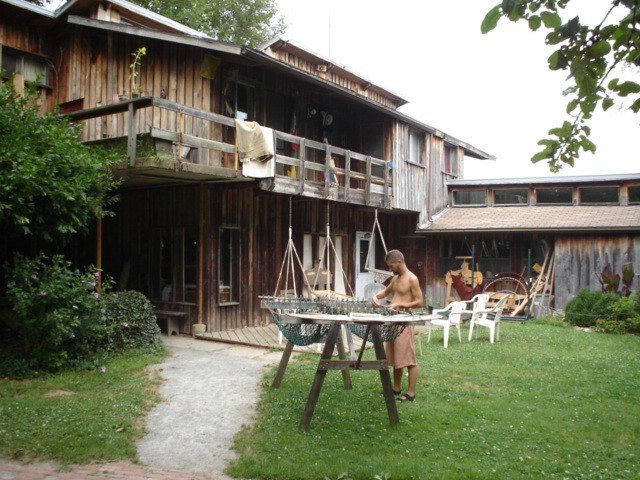Radical Behaviorism
by Andrew Boyd
Today, cultural engineering. The University of Houston presents this series about the machines that make our civilization run, and the people whose ingenuity created them.
Henny Youngman, a comedian known for his one-liners, told of a patient who went to the doctor. "Doctor,"" the patient says, "it hurts when I do this." "Then don't do that," replies the doctor.
The doctor's response aside, it's a conclusion the patient would've arrived at on his own. We respond to external stimuli. If something hurts, we stop. If we enjoy the taste of something, we eat it.
In the early to mid twentieth century, Harvard psychologist B. F. Skinner developed and refined this idea into what he would call radical behaviorism. His lab work shared similarities with that of Pavlov and his dogs. An experimental rat might receive food for pushing a green button and an electric shock for pushing a red button, and as a result of this conditioning learn to push the green button.

Skinner at the Harvard Psychology Department. Photo Credit: Wikipedia
But the theory of radical behaviorism went much further. One of Skinner's goals was to put psychology on a more solid foundation. We can't see inside other people's heads, he reasoned. We can't think what they think or feel what they feel. But we can see how they react to the world around them, to a box of chocolates or the sound of classical music. Skinner wanted to explain human behavior purely in a language of causes and effects, sidestepping the very messy world of what humans actually feel.

Wilhelm Wundt(seated) with colleagues in his psychological laboratory, the first of its kind. Photo Credit: Wikipedia
The basic idea was quite influential in its time and not especially controversial. Where Skinner ran into eventual trouble was in taking his ideas to their logical extreme. In 1948, as a tenured professor well into his career, Skinner published a fictional work that raised a lot of eyebrows. Entitled Walden Two, it tells the story of a happy, well-functioning commune as seen through the eyes of outside visitors. And at the heart of the community's success is cultural engineering, which we interpret as something akin to Skinner's radical behaviorism. Children are raised in a communal setting by volunteer caretakers and have proper behavior etched in their brains through conditioning. They don't experience emotion like jealously because of the way they're raised.
The book's intended as a commentary on the power of radical behaviorism to shape human action for the better. But who's to decide what shaping's to be done? And is it ethical for community leaders to shape their constituent's thoughts? What's the line between cultural engineering and brainwashing? It's a frightening thought wrapped in utopian packaging, and it's not surprising Skinner was criticized.
Yet, as the social unrest of the 1960s stretched across the country, young people turned to Walden Two as a blueprint for building self-sustaining communes. Few of the communes survived. A notable exception is the Twin Oaks Community in Virginia, though its behaviorist roots were supplanted by a focus on egalitarianism. It's possible to tour the community of 100 or so and even join the waiting list to get in — if you're so inspired.

Hammock inweaving at Twin Oaks Community, Louisa County, Virginia, USA. Photo Credit: Wikimedia Commons/Rashaun
I'm Andy Boyd at the University of Houston, where we're interested in the way inventive minds work.
(Theme music)
Behaviorism. From the Stanford Encyclopedia of Philosophy website: http://plato.stanford.edu/entries/behaviorism/. Accessed April 12, 2016.
H. Kuhlmann. Living Walden Two. Champaign, Illinois: University of Illinois Press, 2005.
B. F. Skinner. Walden Two. Indianapolis, Indiana: Hackett Publishing Company, 1948.
Twin Oaks Community. From the Twin Oaks Community website: http://www.twinoaks.org/. Accessed April 12, 2016.
Walden Two. From the Wikipedia website: https://en.wikipedia.org/wiki/Walden_Two. Accessed April 12, 2016.
This episode was first aired on April 14, 2016